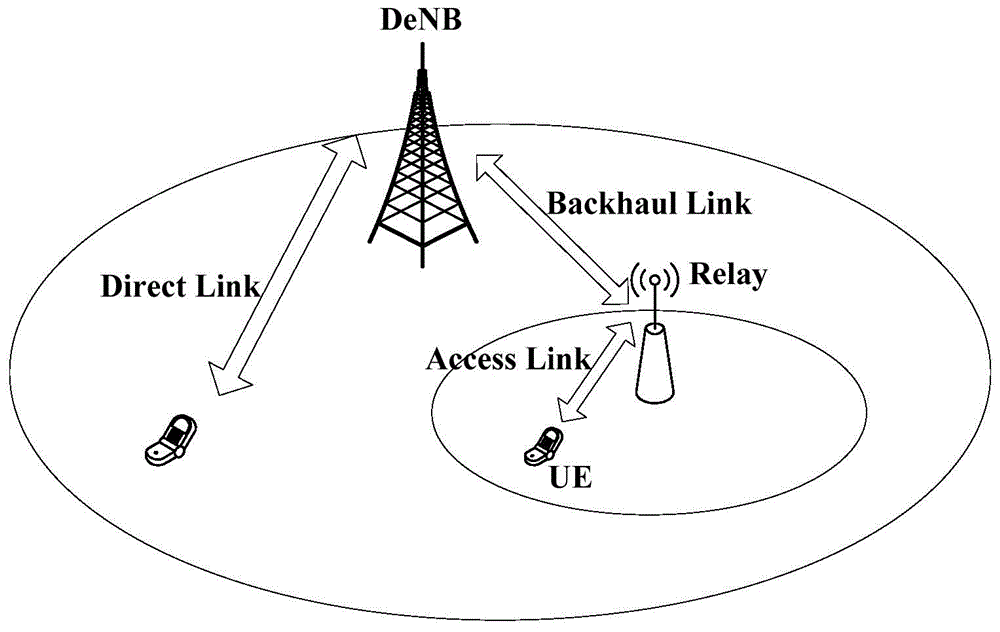Mobile relay and system and adjacent region self-optimizing method thereof
A mobile relay and adjacent cell technology, applied in electrical components, wireless communication, etc., can solve the problems of large wear and tear of high-speed rail carriages, low transmission power of mobile relays, and inability to perceive mobile relay cells, so as to reduce operation and maintenance costs , Reduce the effect of user dropped calls
- Summary
- Abstract
- Description
- Claims
- Application Information
AI Technical Summary
Problems solved by technology
Method used
Image
Examples
Embodiment 1
[0079] Embodiment 1: This embodiment mainly describes a scene where a high-speed train configured with Mobile Relay enters a station and stops, and then automatically establishes a neighbor relationship. In this embodiment, it is assumed that the Mobile Relay supports three air interface technologies of LTE / EV-DO / 1X at the same time, so for the terminal in the compartment, there is an LTE cell Cell_1, a 1X cell Cell_2 and an EV-DO cell Cell_3; and Assume that the broadcast message SIB8 of the DeNB at the station includes 6 neighbor cells of 1X and EV-DO.
[0080] 1. Mobile Relay estimates that its current speed is lower than 5Km / h by detecting its Doppler frequency shift with DeNB, and the SIB1 message of DeNB carries 1 bit information indicating that the current coverage of DeNB is a station, then the neighbor relationship is activated Add process.
[0081] 2. The Mobile Relay saves the PCI and ECGI of the currently resident DeNB in the same-frequency neighbor relationship...
Embodiment 2
[0092] Embodiment 2: This embodiment mainly describes a scenario where a high-speed rail train equipped with Mobile Relay is not set up for neighbor relationship when it stops halfway. In this embodiment, it is assumed that the Mobile Relay supports three air interface technologies of LTE / EV-DO / 1X at the same time, so for the terminal in the vehicle, there is an LTE cell Cell_1, a 1X cell Cell_2 and an EV-DO cell Cell_3.
[0093] 1. Mobile Relay estimates its current speed to be lower than 5Km / h by detecting its Doppler frequency shift with DeNB, but detects that the 1-bit station indication bit in DeNB’s broadcast message SIB1 is 0, indicating that the area is a non-station area, so the DeNB is not added as its own neighbor cell.
[0094] 2. The DeNB covering the Mobile Relay does not belong to the scope of the station. Although the Mobile Relay indicates itself as an RN through the RRC message after entering its coverage area, the DeNB does not configure the Mobile Relay as ...
Embodiment 3
[0095] Embodiment 3: This embodiment mainly describes a scene where a high-speed rail train configured with Mobile Relay automatically deletes the neighbor relationship after leaving the station. In this embodiment, it is assumed that the Mobile Relay supports three air interface technologies of LTE / EV-DO / 1X at the same time, so for the terminal in the vehicle, there is an LTE cell Cell_1, a 1X cell Cell_2 and an EV-DO cell Cell_3.
[0096] After the train enters the station, Mobile Relay adds the identities of the base station Cell_1X of the macro cell 1X and the base station Cell_DO of the macro cell EV-DO into the corresponding neighbor relationship of the cells Cell_2 and Cell_3. The corresponding Cell_1X and Cell_DO also add the cells Cell_2 and Cell_3 into their corresponding neighbor cell relationships.
[0097]1. When the Mobile Relay finds that its own speed exceeds 10km / h, it deletes all neighbor relationships in the dynamic neighbor list.
[0098] 2. When the DeNB ...
PUM
 Login to View More
Login to View More Abstract
Description
Claims
Application Information
 Login to View More
Login to View More - Generate Ideas
- Intellectual Property
- Life Sciences
- Materials
- Tech Scout
- Unparalleled Data Quality
- Higher Quality Content
- 60% Fewer Hallucinations
Browse by: Latest US Patents, China's latest patents, Technical Efficacy Thesaurus, Application Domain, Technology Topic, Popular Technical Reports.
© 2025 PatSnap. All rights reserved.Legal|Privacy policy|Modern Slavery Act Transparency Statement|Sitemap|About US| Contact US: help@patsnap.com



